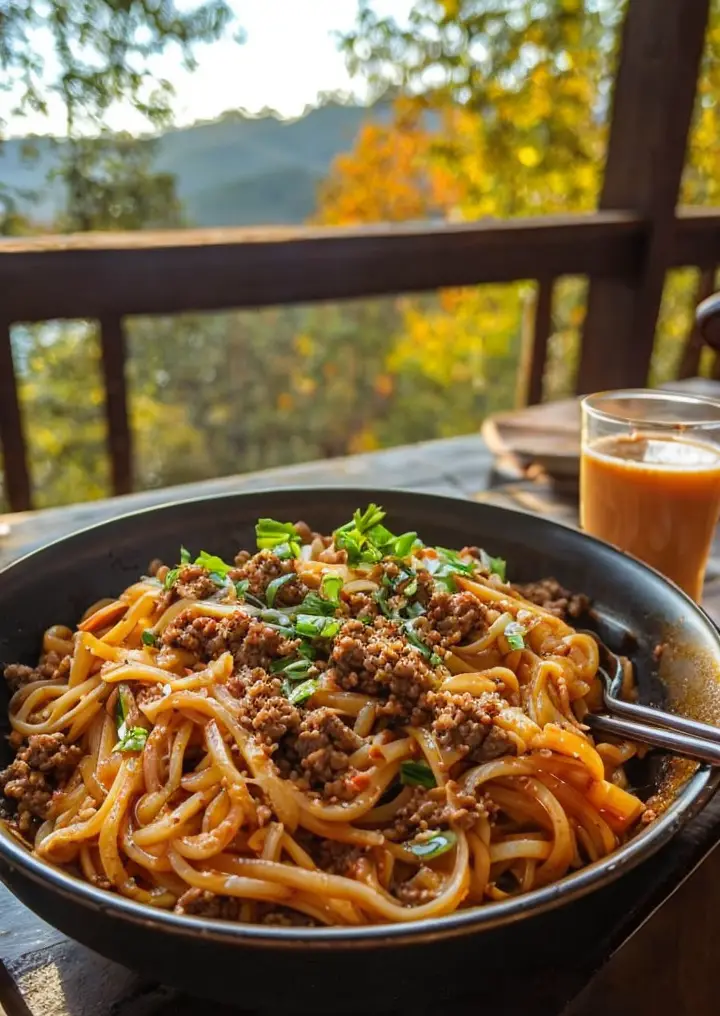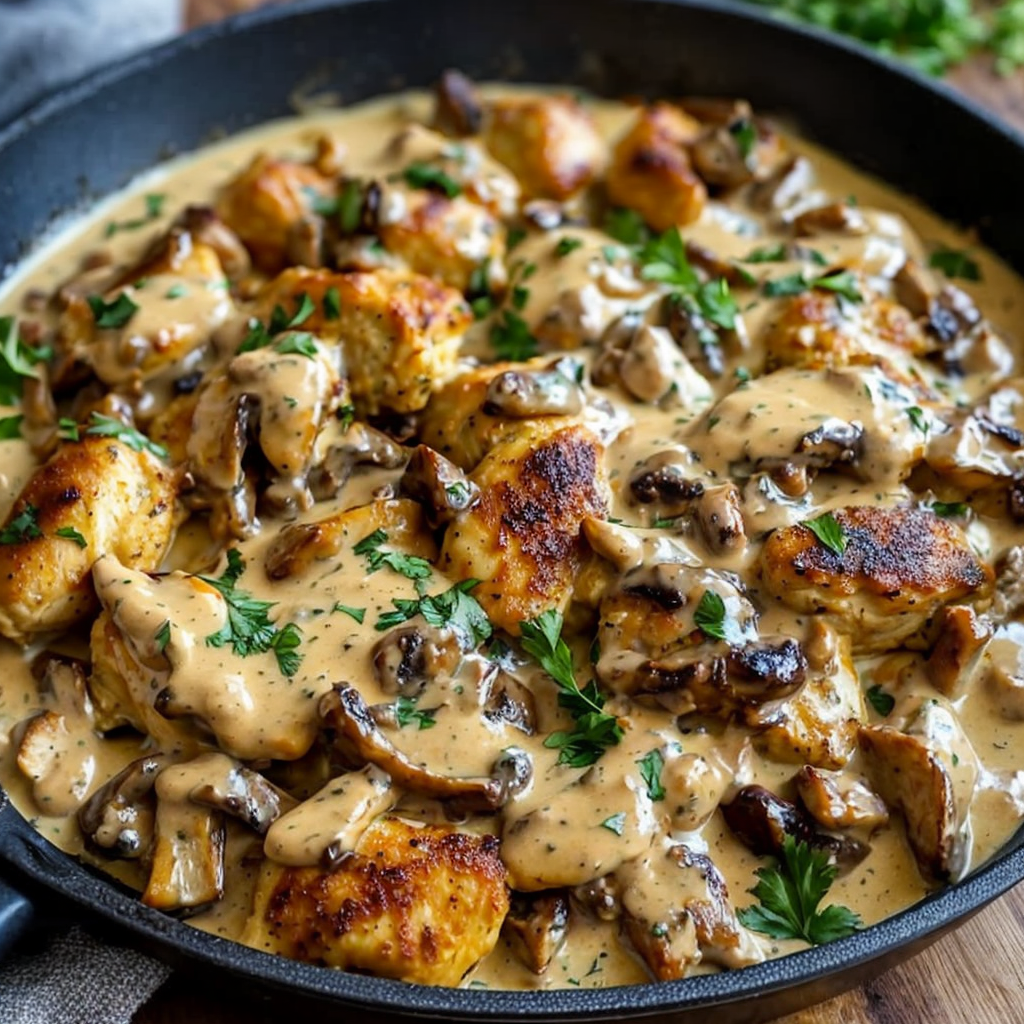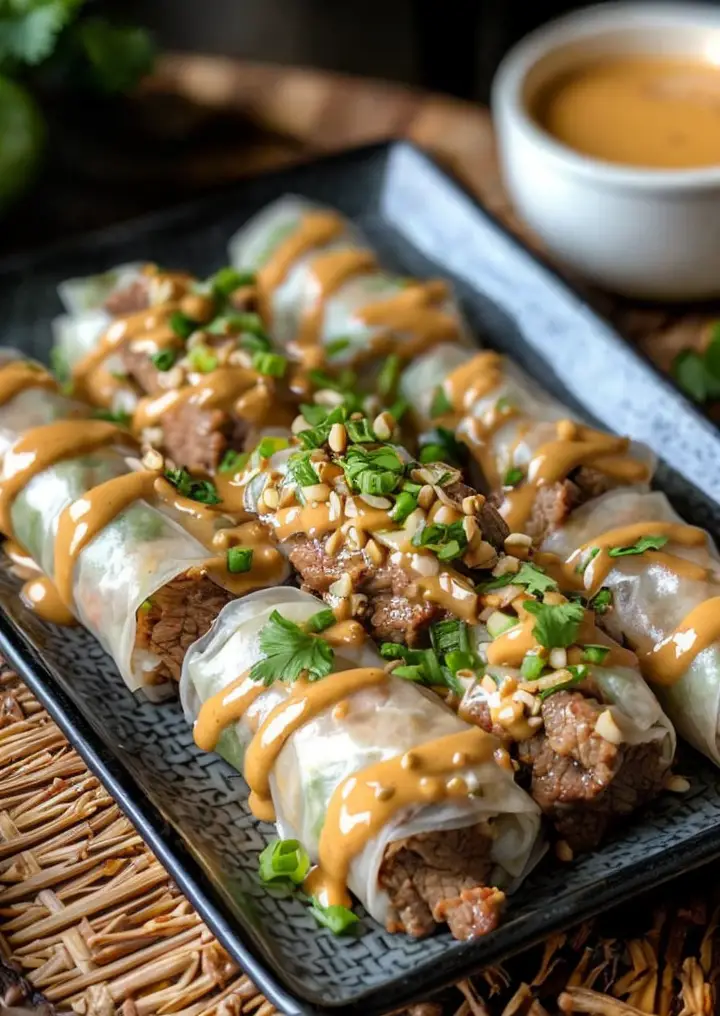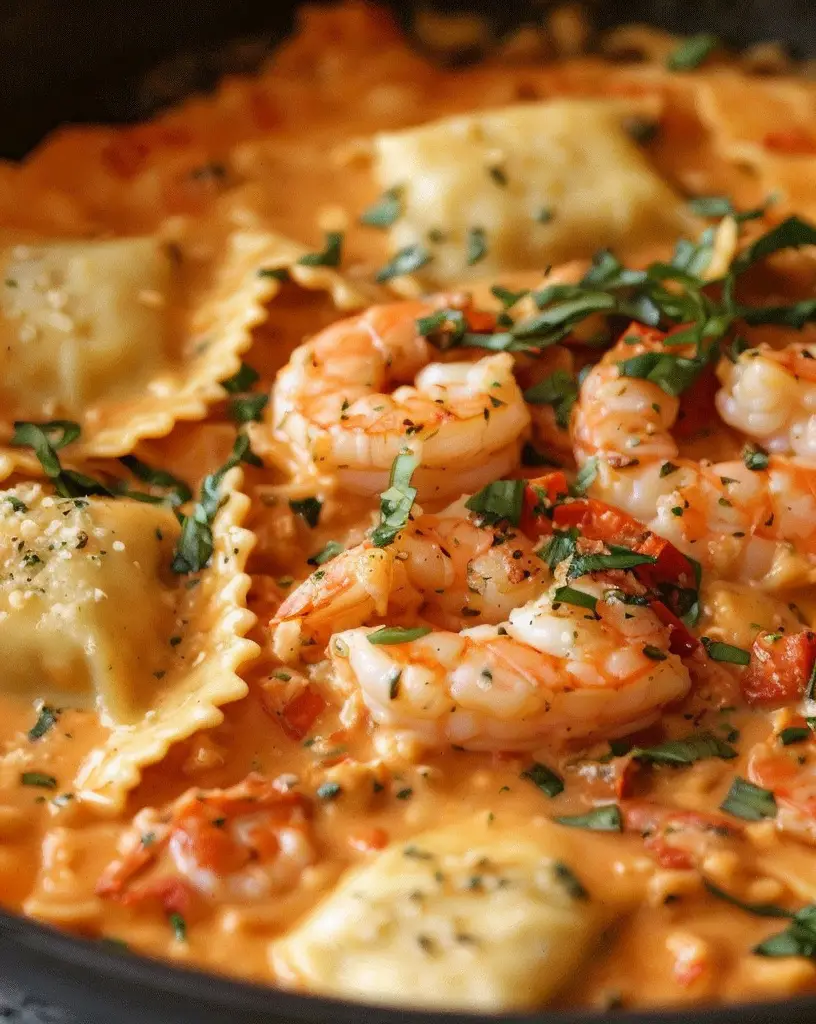Decadent Boston Cream Pie Cheesecake: A Sinful Delight
Indulge your senses with this **Decadent Boston Cream Pie Cheesecake**, a rich and creamy blend that combines the luscious flavors of chocolate, vanilla, and moist cake in one irresistible dessert. This cheesecake is perfect for any occasion, whether it’s a birthday party, holiday gathering, or simply a self-treat. With its beautiful layers, it will not only satisfy your cravings but also impress your guests.
As you slice into this cheesecake, the smooth, rich vanilla custard filling and velvety chocolate topping create a delightful symphony of flavors. Each bite is a blissful journey that brings back memories of the classic Boston cream pie, but in a cheesecake form. The combination of the creamy cheesecake with the light, fluffy sponge cake base offers a textural contrast that is simply divine.
Quick Recipe Highlights
- Flavor Profile: Expect a delightful mixture of rich chocolate and smooth vanilla, enhanced by a hint of buttery cake.
- Texture: The cheesecake is creamy and dense, topped with a silky chocolate ganache, creating a lush experience.
- Aroma: Enjoy the rich aromas of vanilla and chocolate mingling together as the cheesecake cools.
- Visual Appeal: The layered presentation, with a glossy chocolate glaze, makes it a feast for the eyes.
- Skill Level Needed: This recipe requires moderate baking skills, including knowledge of cheesecake techniques.
- Special Equipment: You will need a springform pan, a mixer, and a saucepan for preparing the ganache.
Recipe Overview
- Difficulty Level: While this cheesecake may seem daunting, the step-by-step instructions will guide you through each layer seamlessly.
- Category: This recipe falls into the dessert category, making it a perfect end to any meal.
- Cuisine: Inspired by both American and French culinary traditions, this cheesecake embodies the best of both worlds.
- Cost: The overall cost of ingredients is moderate, making it accessible for home bakers looking for a special treat.
- Season: This dessert is versatile and can be made year-round, but particularly shines at parties and celebrations.
- Occasion: Ideal for birthday celebrations, holiday gatherings, or as a delightful weekend dessert.
Why You’ll Love This Recipe
This **Decadent Boston Cream Pie Cheesecake** is a true delight for both the palate and the eyes. The melding of flavors will tantalize your taste buds, making it hard to resist a second slice. Its rich, creamy texture is perfectly complemented by the smooth chocolate topping, creating a heavenly combination that will leave you and your guests craving more.
Preparing this cheesecake allows for an enjoyable baking experience. With a manageable prep time coupled with easy-to-follow steps, it makes for a wonderful opportunity to bond with family or friends as you create a masterpiece together. The finished product not only tastes incredible but looks like a professional bakery creation.
In addition to the unforgettable flavor, this recipe offers some nutritional benefits worth noting. Made with quality ingredients, this cheesecake can provide an indulgent treat while still bringing joy and satisfaction without excessive guilt.
This cheesecake is perfect for social gatherings. Its elegant presentation invites conversation, making it an excellent centerpiece for parties and celebrations. Sharing this dessert will create delightful moments, as everyone shares their thoughts on its delightful taste.
Lastly, this recipe is cost-effective, as its ingredients are widely available and do not break the bank. With its impressive flavors and quality presentation, you can create an unforgettable dessert that provides immense value for your investment.
Historical Background and Cultural Significance
The Boston cream pie, despite its name, is actually a cake! Its origins trace back to the 19th century when it was first created by chefs at the Parker House Hotel in Boston. This charming dessert has become synonymous with the city itself and was even designated as the official dessert of Massachusetts.
Throughout the years, the Boston cream pie has evolved, blending tradition with modern variations. The concept of transforming this classic pie into a cheesecake emerged as bakers sought to provide new interpretations of beloved desserts, allowing fans to enjoy the flavors they adore in more versatile forms.
The cultural significance of this beloved dessert extends beyond its delightful taste; it symbolizes the innovative spirit of American cuisine. As food cultures merge and change, desserts like the Boston cream pie cheesecake showcase the adaptability of culinary traditions, perpetuating their relevance in contemporary culture.
Regional variations have also emerged. While some may stick to the traditional chocolate and vanilla combination, others have played with flavors, introducing ingredients like espresso, caramel, or fruit, each bringing a unique twist on this iconic dessert.
Ingredient Deep Dive
Cheese: Cream cheese serves as the backbone of this cheesecake, delivering a rich and creamy texture. It is a source of calcium and protein and should be at room temperature for optimal blending. Store it in the fridge and avoid purchasing when expired. If unavailable, mascarpone can be used as a delightful alternative.
Chocolate: High-quality semi-sweet or dark chocolate contributes to the luscious chocolate ganache, providing rich flavor and antioxidants. Choose a bar over chips for better melting consistency, and store it in a cool, dry place. Substitutes like cocoa powder or milk chocolate can alter the flavor but work in a pinch.
Common Mistakes to Avoid
- Not using room-temperature ingredients: Failing to let your cream cheese and eggs come to room temperature can result in a lumpy cheesecake.
- Overmixing the batter: Mixing too vigorously incorporates air, leading to cracks in the surface once baked. Aim for a gentle blending.
- Skipping the water bath: A water bath helps regulate heat and moisture, preventing dryness or cracking in the cheesecake.
- Baking at the wrong temperature: Ensure your oven is preheated and at the correct temperature to avoid uneven cooking.
- Not allowing the cheesecake to cool properly: Cooling too quickly can cause cracks and texture issues. Allow it to cool gradually in the oven.
- Using a cracked springform pan: Inspect the seals; any leaks can lead to a ruined cheesecake.
- Rushing the chill process: Allow your cheesecake ample time to set in the refrigerator; patience is key for the best texture.
- Not tasting the ganache: Always taste your chocolate ganache to ensure it meets your desired sweet-to-bitter balance.
- Ignoring baked cheesecake signs: Look for a slightly wobbly texture in the center, indicating it’s done without overbaking.
- Neglecting to prep the pan: Grease the pan with butter to avoid sticking, which can ruin presentation.
Essential Techniques
Water Bath Technique: This method is essential for creating a moist environment for the cheesecake. Wrap the springform pan in aluminum foil to prevent water from seeping in. Place it in a larger pan filled with hot water before baking. This technique helps cook the cheesecake more evenly, reducing the chances of cracks.
Chilling the Cheesecake: After baking, allow the cheesecake to cool in the oven with the door ajar for about an hour. This gradual cooling prevents sudden temperature changes that can crack the top. Once at room temperature, move it to the refrigerator to chill for at least four hours before slicing.
Pro Tips for Perfect Decadent Boston Cream Pie Cheesecake
– Use high-quality chocolate for the ganache to elevate the cheesecake’s flavor, ensuring a rich and decadent experience.
– Always integrate the ganache while the cheesecake is still cold, allowing it to set up nicely without running off.
– Allow ingredients like cream cheese and eggs to come to room temperature to facilitate a smoother batter consistency.
– When preparing the crust, ensure it is tightly packed and baked until it smells fragrant, which enhances the flavor.
– For extra flair, top the cheesecake with chocolate shavings or berries to enhance the presentation visually.
– Always make sure your oven is calibrated accurately; an oven thermometer can help maintain the correct baking temperature.
– Practice patience; let the cheesecake set overnight for the best flavors to meld and enhance the overall richness.
– Consider garnishing with a sprinkle of coarse sea salt to balance the sweetness of the ganache and enhance its flavor.
Variations and Adaptations
This **Decadent Boston Cream Pie Cheesecake** can be modified in several exciting ways. For a seasonal touch, incorporate pumpkin puree into the cheesecake batter during fall or add a layer of fresh berries for a refreshing summer twist.
When it comes to dietary accommodations, you can experiment with gluten-free options by replacing conventional graham crackers with gluten-free ones. This adaptation does not compromise the texture or flavor while allowing those with dietary restrictions to enjoy the dessert.
Flavor modifications can also introduce varieties such as hazelnut or espresso to the ganache. These adjustments will infuse a deeper flavor profile while enhancing the overall richness!
To present the cheesecake differently, consider serving it in individual jars for easy handling and a stylish touch. This modern serving style allows for unique garnishing options!
Serving and Presentation Guide
Plating your cheesecake beautifully is crucial for making it visually appealing. Slice evenly using a hot, dry knife for clean cuts, then transfer slices to dessert plates with a gentle hand.
Garnishing with whipped cream, chocolate curls, or fresh fruit not only adds color but also showcases the flavors within. A drizzle of chocolate or caramel sauce can contribute an extra touch of decadence.
Consider traditional accompaniments such as coffee or tea to serve alongside the cheesecake, enhancing flavor consistency. For modern presentation, serve slices alongside a scoop of vanilla ice cream for a delightful contrast in temperature and texture.
Be mindful of temperature; this cheesecake should ideally be served chilled for the best flavor experience. Offer bites that are proportionate to ensure everyone can enjoy without excess.
Wine and Beverage Pairing
For the perfect pairing, consider serving a sweet dessert wine like a late-harvest Riesling. Its fruity notes will complement the cheesecake’s sweetness. Alternatively, a bold Port wine can amplify the richness of the chocolate ganache.
Non-alcoholic alternatives include a rich hot chocolate or an iced coffee, both of which offer a harmonious balance to the dessert’s creaminess. Remember to serve these beverages at the right temperature for the best experience.
If you’re opting for a coffee or tea pairing, a robust espresso can cut through the richness of the cheesecake, enhancing its chocolate flavors. When serving, offer cream or milk options to accommodate different preferences.
Storage and Shelf Life
To ensure the cheesecake remains fresh, store it in an airtight container in the refrigerator. It can last for up to one week. For longer storage, consider freezing individual slices wrapped in plastic wrap and placed in a freezer-safe bag. These can last up to three months!
Keep an eye out for signs of spoilage, such as an off smell or unusual texture, which indicate it’s time to dispose of the cheesecake. When ready to enjoy frozen slices, let them thaw in the refrigerator for a few hours before serving.
Reheating cheesecake is generally unnecessary; however, if you wish to warm a slice slightly, use a microwave for short intervals to avoid melting the ganache.
Make Ahead Strategies
This cheesecake is an excellent candidate for making ahead of time. Prepare the cheesecake entirely up to a day in advance, allowing sufficient chilling time for the flavors to meld beautifully.
If you’re planning an event, consider baking the cheesecake earlier in the week. An excellent strategy is to freeze the unglazed cheesecake, then thaw and add the ganache just before serving. This ensures maximum freshness.
Quality impacts are minimal if you treat the cheesecake with care, and assembling it before serving allows for a crisply plated presentation. When reheating any elements for serving, ensure they complement the cheesecake’s cold nature harmoniously.
Fresh elements like whipped cream or fresh fruit toppings should always be added just before serving for a vibrant and appetizing look.
Scaling Instructions
Scaling a recipe like this is quite easy. If you wish to halve the recipe, simply divide the ingredient amounts by two and adjust the pan size accordingly. For a smaller cheesecake, consider using a 6-inch springform pan to achieve the same great taste with less volume.
Doubling or tripling the recipe will require careful consideration of your mixing equipment. You may need to mix in batches to achieve even distribution within your batter.
Timing modifications are also necessary; larger cheesecakes will require additional baking time. Test for doneness by checking if the edges are set while the center remains slightly jiggly.
When storing oversized portions, ensure they are layered appropriately in the fridge or freezer to prevent sticking or uneven thawing.
Nutritional Deep Dive
On a macro level, this cheesecake is rich in fat and carbohydrates, primarily from cream cheese and sugar, while providing a moderate protein content. Nutritionally, it’s essential to consume it in moderation, as its richness can lead to higher caloric intake.
Key micronutrients present include calcium from cream cheese, which supports bone health. Additionally, chocolate possesses antioxidants that contribute positively to one’s overall health.
When it comes to dietary considerations, it’s advisable to factor in serving sizes. Enjoying smaller portions during special occasions can satisfy both cravings while maintaining balance in your diet.
For those mindful of weight management, consider pairing this dessert with a light, fresh fruit salad or a cup of herbal tea, balancing sweetness with lighter options for a fulfilling finish.
Dietary Adaptations
For gluten-free eaters, swap traditional graham cracker crust with gluten-free alternatives like almond flour for a delightful base that doesn’t compromise flavor.
Vegans can experiment with plant-based cream cheese and aquafaba (chickpea liquid) to replace eggs, creating a dairy-free, egg-free delight that maintains creamy texture.
For lower-carb or keto variations, utilize almond or coconut flour for the crust and an appropriate sugar substitute for the filling, ensuring a delectable dessert that aligns with dietary restrictions.
Consider low-FODMAP options by using lactose-free cream cheese and ensuring your chocolate is dairy-free; this can cater to individuals with sensitive stomachs while still delivering the same satisfaction.
Troubleshooting Guide
If your cheesecake is cracking, it may be due to overmixing or a rapid temperature change during cooking. Always mix gently and allow the cheesecake to cool gradually within the oven.
Texture issues, such as a grainy consistency, often result from cold ingredients; ensure your cream cheese and eggs are at room temperature for optimal blending.
Should the flavor be off-balance, taste and adjust your sugar or chocolate levels. Sometimes a pinch of salt can enhance chocolate flavors significantly.
If your ganache is too thin, ensure you allow it to cool properly before pouring. Also, using higher cocoa content chocolate can give a thicker consistency.
Finally, if the cheesecake is too dry, it may have been baked too long. Aim for a slight jiggle in the center when removing from the oven and allow it to set in cooling conditions.
Recipe Success Stories
Readers have raved about their experiences with this **Decadent Boston Cream Pie Cheesecake**, sharing how it became the star of their celebrations. Many have experimented with unique adaptations, such as incorporating their favorite flavors, proving the versatility of the recipe.
Community feedback has highlighted the cheesecake’s rich, creamy texture and seamless blend of flavors. Several home bakers enjoyed the process, finding the results deeply rewarding, prompting them to share photos on social media platforms.
Adaptation stories reveal readers choosing to invert the traditional flavor by incorporating fruit toppings or adjusting the base for dietary preferences, enhancing its broad appeal.
Photography tips shared by readers emphasize the importance of natural lighting when capturing the cheesecake’s glossy ganache; many found it easy to showcase its beauty with minimal effort.
Frequently Asked Questions
Yes! This cheesecake is perfect for making a day or two in advance, allowing it to chill and flavor to develop beautifully. Just ensure it is properly sealed in the fridge.
What’s the best way to store leftover cheesecake?
Leftover cheesecake should be stored in an airtight container in the refrigerator, where it can last up to a week. You can also freeze portions for longer storage.
Can I use a different type of chocolate for the ganache?
Absolutely! While semi-sweet chocolate is traditional, dark chocolate or even white chocolate can provide delightful variations in taste.
How do I prevent my cheesecake from cracking?
To help prevent cracks, bake the cheesecake in a water bath and allow it to cool slowly. Mixing the batter gently and avoiding over-mixing is also essential.
Is it possible to make this recipe gluten-free?
Yes! Simply substitute the graham cracker crust with a gluten-free crust alternative or use almond flour as a base, staying true to an excellent flavor profile.
What should I serve with the cheesecake?
Offer accompaniments such as whipped cream, fresh fruit, or a scoop of ice cream to balance and elevate the delightful flavors of the cheesecake.
Can I customize the flavors of this cheesecake?
Certainly! Modifications can include adding fruit purees, flavored extracts, or even spices into the batter for a unique twist while maintaining its essence.
Is it necessary to use a springform pan?
While a springform pan is recommended, you can use a standard cake pan, but be sure to line the bottom with parchment for easy removal.
Can I freeze the cheesecake?
Yes, individual slices can be frozen for up to three months. Wrap them tightly in plastic wrap and store them in an airtight container.
What is the ideal baking temperature for the cheesecake?
Cheesecake is best baked at 325°F (160°C) to ensure even cooking without overbaking, which contributes to cracked surfaces.
Additional Resources
Expand your cooking repertoire with similar dessert recipes like our chocolate fudge cake or strawberry shortcake. For those looking to refine their baking techniques, check out our detailed guides on mastering the art of cake baking or cheesecake troubleshooting.
Explore ingredient information to understand the best types of cream cheese for cheesecakes, and find recommendations for the finest brands of chocolate to use in your desserts.
If you want to tap into seasonal variations, discover how to incorporate festive flavors in your baking during holidays, or attend local food festivals that celebrate desserts.
Finally, explore equipment suggestions to ensure you have the best tools necessary to create stunning cheesecakes and other confections.
Join the Conversation
We invite you to share your **Decadent Boston Cream Pie Cheesecake** experiences on social media, showcasing your stunning creations for others to admire. Use our hashtag to connect with fellow cheesecake enthusiasts and exchange tips or variations on our beloved recipe.
Feel free to leave photography tips or ideas for creative presentations. We love to hear how you’ve made the recipe your own! Join our community for discussions about recipe challenges, successes, and joyful moments that come when sharing delicious desserts.
Interactive discussion not only fuels our passion for baking but helps others find inspiration in the kitchen. So, let’s celebrate our collective love for all things cheesecake!
The Recipe
Decadent Boston Cream Pie Cheesecake
Serves: 12 slices
Prep Time: 30 mins
Cook Time: 60 mins
Total Time: 90 mins
Kitchen Equipment Needed
- Springform pan
- Mixer
- Whisk
- Measuring cups and spoons
- Aluminum foil
- Spatula
- Double boiler or microwave-safe bowl
Ingredients
- For the crust:
- 1 ½ cups graham cracker crumbs
- ½ cup unsalted butter, melted
- ¼ cup sugar
- For the cheesecake filling:
- 2 lbs cream cheese, softened
- 1 cup sugar
- 1 teaspoon vanilla extract
- 4 large eggs
- For the ganache:
- 8 oz semi-sweet chocolate, chopped
- ½ cup heavy cream
Directions
- Preheat your oven to 325°F (160°C).
- In a mixing bowl, combine graham cracker crumbs, melted butter, and sugar. Press mixture firmly into the bottom of a springform pan.
- Bake the crust for 10 minutes, then set aside to cool while preparing the filling.
- In a large bowl, beat cream cheese until smooth. Gradually add sugar and mix until creamy, then incorporate vanilla.
- Add eggs one at a time, mixing just until combined. Avoid overmixing to minimize air bubbles.
- Pour the filling over the cooled crust and smooth the top.
- Wrap the springform pan in aluminum foil and place it in a larger baking dish filled with hot water for a water bath.
- Bake for 60 minutes or until the edges are set and the center is slightly jiggly. Turn off the oven and let it cool with the door ajar for one hour.
- Remove from the water bath and refrigerate for at least four hours until completely chilled.
- For the ganache, heat the cream in a saucepan until just boiling, then pour over the chopped chocolate. Let sit for a few minutes then whisk until smooth.
- Once the cheesecake has set, pour the ganache over the top, allowing it to drizzle down the sides.
- Chill again for at least 30 minutes to set the ganache before slicing and serving.
Recipe Notes
- Feel free to add a layer of fresh fruit or nuts for extra flavor.
- For a less sweet variation, reduce the sugar in the ganache by a few tablespoons.
- Consider chocolate curls as an added garnish to enhance presentation.




